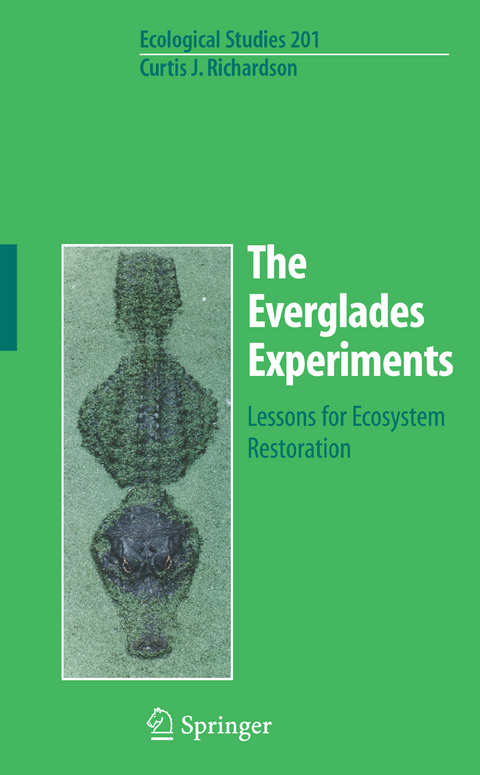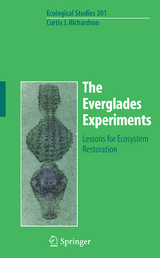The Everglades Experiments
Springer-Verlag New York Inc.
978-0-387-98796-5 (ISBN)
About the Author: Curtis J. Richardson is a professor of Resource Ecology at the Nicholas School of the Environment and Earth Sciences, Duke University, and Director of the Duke University Wetland Center in Durham, NC.
Everglades Ecosystem.- Overview of Gradient Studies and Experiments.- Ecological Status of the Everglades: Environmental and Human Factors that Control the Peatland Complex on the Landscape.- Soil Characteristics of the Everglades Peatland.- Vegetation and Algae of the Everglades Fen.- Nutrient and Hydrologic Gradient Studies.- to the Gradient Studies.- Enrichment Gradients in WCA-2A and Northern WCA-3A: Water, Soil, Plant Biomass, and Nutrient Storage Responses.- Geologic Settings and Hydrology Gradients in the Everglades.- Effects of Hydrologic Management Decisions on Everglades Tree Islands.- Macrophyte Community Responses in the Everglades with an Emphasis on Cattail (Typha domingensis) and Sawgrass (Cladium jamaicense) Interactions along a Gradient of Long-Term Nutrient Additions, Altered Hydroperiod, and Fire.- Algal Responses to Long-Term Nutrient Additions.- Macroinvertebrate Responses to a Gradient of Long-Term Nutrient Additions, Altered Hydroperiod, and Fire.- Historical Changes in Water Quality and Vegetation in WCA-2A Determined by Paleoecological Analyses.- Carbon Cycling and Dissolved Organic Matter Export in the Northern Everglades.- Everglades Experiments.- to a Mesocosm Approach for Establishment of Phosphorus Gradient Experiments.- Water Quality, Soil Chemistry, and Ecosystem Responses to P Dosing.- Macrophyte Slough Community Response to Experimental Phosphorus Enrichment and Periphyton Removal.- Decomposition of Litter and Peat in the Everglades: The Influence of P Concentrations.- Experimental Assessment of Phosphorus Effects on Algal Assemblages in Dosing Mesocosms.- Macroinvertebrate and Fish Responses to Experimental P Additions in Everglades Sloughs.- Plant Community Response to Long-Term N and P Fertilization.- The Effects of Disturbance, Phosphorus, and Water Level on Plant Succession in the Everglades.- Establishment and Seedling Growth of Sawgrass and Cattail from the Everglades.- Modeling Ecosystem Responses to Phosphorus Additions.- Long-Term Phosphorus Assimilative Capacity (PAC) in the Everglades.- Spatial Distributions of Total Phosphorus and Phosphorus Accretion Rates in Everglades Soils.- An Ecological Basis for Establishment of a Phosphorus Threshold for the Everglades Ecosystem.- Lessons for Restoration of the Everglades.- An Ecological Approach for Restoration of the Everglades Fen.
| Reihe/Serie | Ecological Studies ; 201 |
|---|---|
| Zusatzinfo | 249 Illustrations, black and white; XVIII, 702 p. 249 illus. |
| Verlagsort | New York, NY |
| Sprache | englisch |
| Maße | 155 x 235 mm |
| Themenwelt | Naturwissenschaften ► Biologie ► Ökologie / Naturschutz |
| ISBN-10 | 0-387-98796-7 / 0387987967 |
| ISBN-13 | 978-0-387-98796-5 / 9780387987965 |
| Zustand | Neuware |
| Haben Sie eine Frage zum Produkt? |
aus dem Bereich




